 полная версия
полная версияCopyright: Its History and Its Law
Subsequent editions non-copyright
A work which was not originally copyrighted shall not be entitled to copyright in subsequent editions.
Article 9Translation protected
Authorized translations shall be protected in the same manner as original works.
Translators of works concerning which no right of guaranteed property exists, or the guaranteed copyright of which may have been extinguished, may obtain for their translations the rights of property set forth in Article 3d but they shall not prevent the publication of other translations of the same work.
Article 10Addresses
Addresses or discourses delivered or read before deliberative assemblies, courts of justice, or at public meetings may be printed in the daily press without the necessity of any authorization, with due regard, however, to the provisions of the domestic legislation of each nation.
Article 11Newspaper articles
Literary, scientific, or artistic writings, whatever may be their subjects, published in newspapers or magazines in any one of the countries of the Union, shall not be reproduced in the other countries without the consent of the authors. With the exception of the works mentioned, any article in a newspaper may be reprinted by others if it has not been expressly prohibited, but in every case the source from which it is taken must be cited.
Newspaper news
News and miscellaneous items published merely for general information do not enjoy protection under this convention.
Article 12Fragments of literary or artistic works
The reproduction of extracts from literary or artistic publications for the purpose of instruction or chrestomathy does not confer any right of property, and may, therefore, be freely made in all the signatory countries.
Article 13Infringements defined
The indirect appropriation of unauthorized parts of a literary or artistic work having no original character shall be deemed an illicit reproduction, in so far as affects civil liability.
The reproduction in any form of an entire work, or of the greater part thereof, accompanied by notes or commentaries under the pretext of literary criticism or amplification, or supplement to the original work, shall also be considered illicit.
Article 14Fraudulent copies to be sequestrated, etc.
Every publication infringing a copyright may be confiscated in the signatory countries in which the original work had the right to be legally protected, without prejudice to the indemnities or penalties which the counterfeiters may have incurred according to the laws of the country in which the fraud may have been committed.
Article 15Each government to exercise supervision
Each of the Governments of the signatory countries shall retain the right to permit, inspect, or prohibit the circulation, representation, or exhibition of works or productions, concerning which the proper authority may have to exercise that right.
Article 16Convention to take effect three months after ratification
The present convention shall become operative between the signatory States which ratify it three months after they shall have communicated their ratification to the Argentine Government, and it shall remain in force among them until a year after the date, when it may be denounced. This denunciation shall be addressed to the Argentine Government and shall be without force except with respect to the country making it.
Signed at Buenos Aires Aug. 11, 1910
Made and signed in the city of Buenos Aires on the eleventh day of August in the year one thousand nine hundred and ten, in Spanish, English, Portuguese, and French, and deposited in the ministry of foreign affairs of the Argentine Republic, in order that certified copies be made for transmission to each one of the signatory nations through the appropriate diplomatic channels.
The convention was thus signed by representatives of twenty powers: the United States of America, Argentine Republic, Brazil, Chile, Colombia, Costa Rica, Cuba, Dominican Republic, Ecuador, Guatemala, Haiti, Honduras, Mexico, Nicaragua, Panama, Paraguay, Peru, Salvador, Uruguay and Venezuela.
CHRONOLOGICAL TABLE OF LAWS AND CASES, ENGLISH AND AMERICAN
This table gives in chronological order the statutes, with reference to their place in the statute books, and historical, leading and recent cases with the name of the court, of the judge presiding or giving the opinion, and the reference to the law reports, also an epitome of the point cited in the text, with page reference. It is not intended to cover minor cases, not settling any principle, and where a decision has been reversed on appeal, the case in the lower court may not be given unless some definite point was there settled. The usual law report abbreviations are employed; outside of these, Copinger refers to Copinger's "Law of Copyright," Copr. Cas. to the annual summary of copyright cases edited by McGillivray and published by the English Publishers Association, Hamlin Copr. C. & D. to Hamlin's "Copyright Cases and Decisions, 1891-1903," published for the American Publishers' Copyright League, Times to the London Times legal column, and Pub. Week. to the Publishers' Weekly, of New York. English and American cases can be distinguished by the name of the court, judge or report. Cases are entered alphabetically in the general index with references to the year and to the page of text.
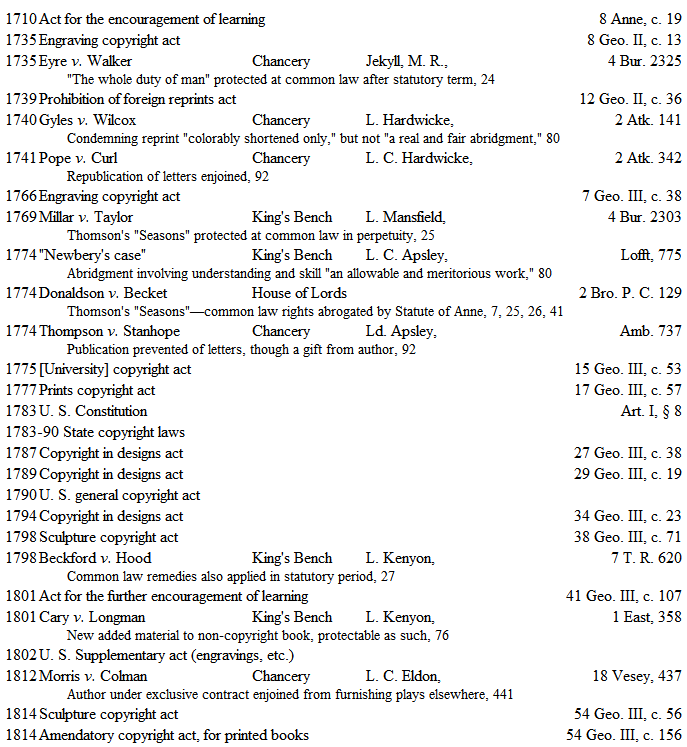

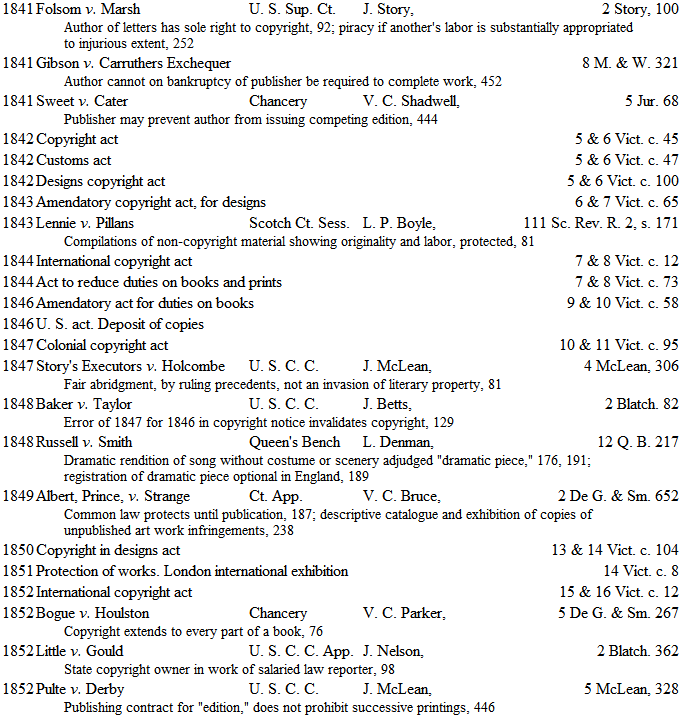




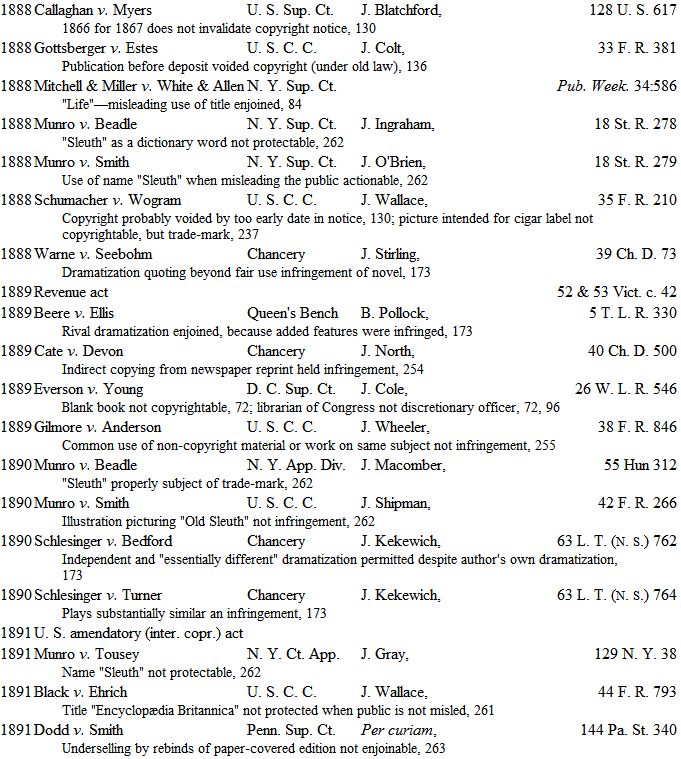
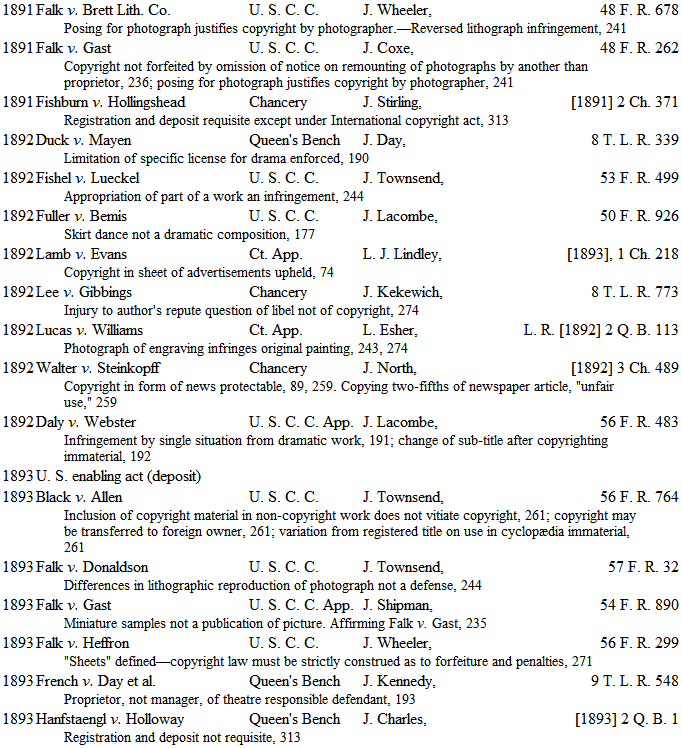

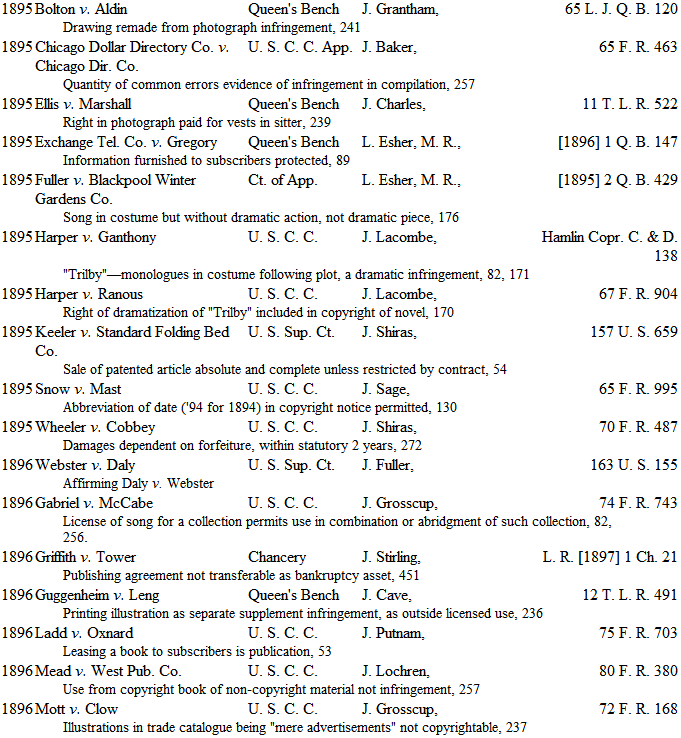

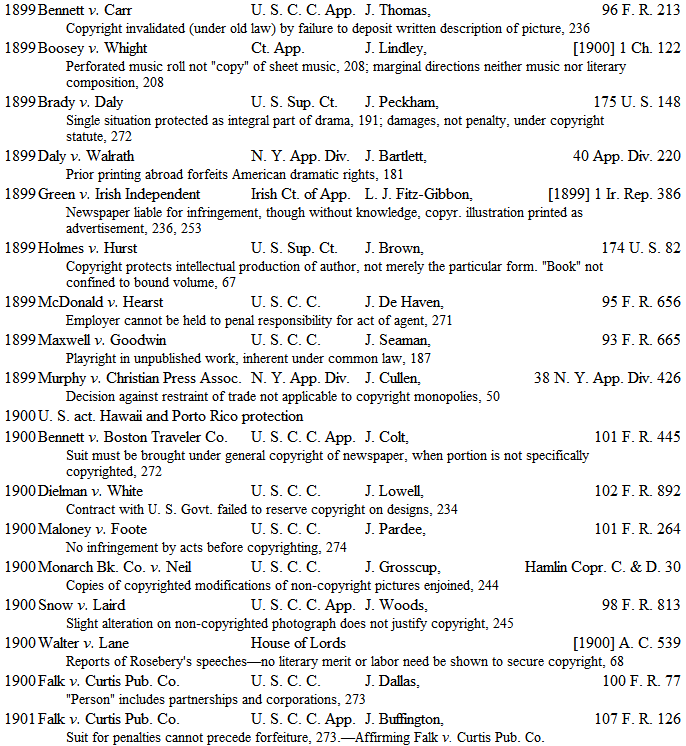
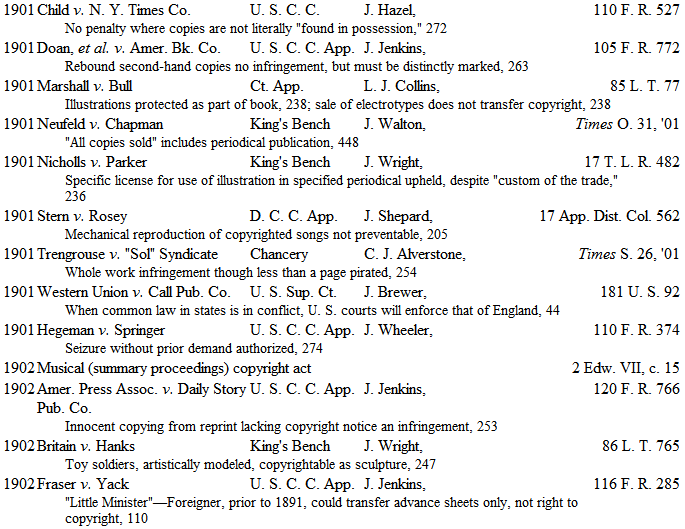
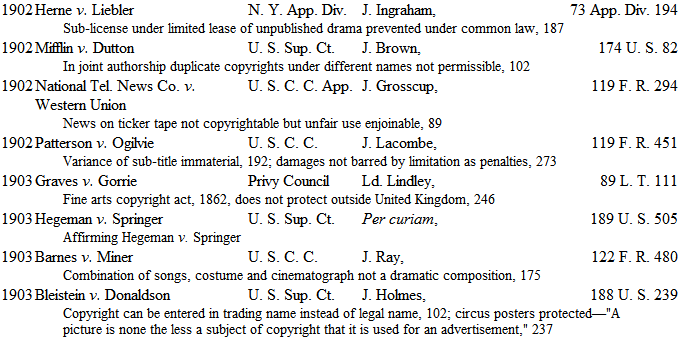
1
The votes on these decisions are given differently in the several copyright authorities. These figures are corrected from 4 Burrow's Reports, 2408, the leading English parliamentary reports, and are probably right.
2
The Act of June 18, 1874, provides that the notice of copyright to be inscribed on each copy of a copyrighted work shall consist of the following words:
3
Article 7 provides for a general term of protection for life and fifty years.



